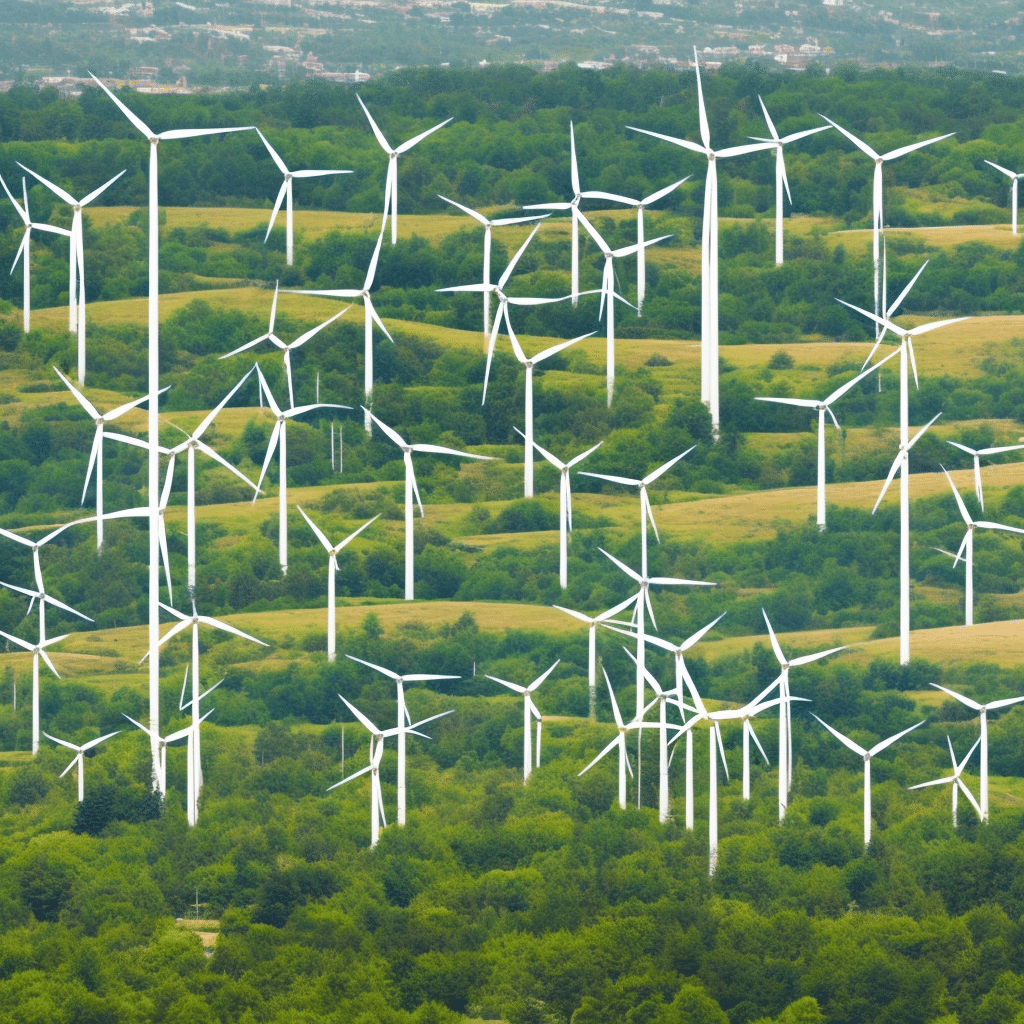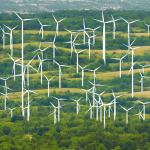As we stand in 2024, it’s exciting to look at the strides being made in clean and renewable energy technologies. The push for sustainable development has been increasing at an unprecedented pace. The world is rapidly shifting from conventional power sources to cleaner, greener, and more sustainable ones. Now more than ever, renewable energy is becoming a significant part of our present and will undoubtedly be a cornerstone of our future. Let’s delve into the innovations that are revolutionizing the renewable energy industry today.
Harnessing Solar Power: A Bright Prospect
Sun is our planet’s most abundant and reliable energy source. Therefore, it’s no surprise that solar power has been at the forefront of renewable energy technologies.
Cela peut vous intéresser : What Are the Advances in Wearable Tech for Monitoring Environmental Exposure?
However, traditional solar panels have their limitations. They only generate electricity during daylight hours and in clear weather. But today, an innovative technology is taking solar power to the next level – solar energy storage.
Solar energy storage systems allow for the storing of excess solar power generated during the day, which can be utilized at night or during periods of low solar production. This development not only maximizes the productivity of solar panels but also ensures that homes and businesses can remain powered even in the absence of sunlight.
A découvrir également : How Are AI-Powered Assistive Devices Transforming Lives of Individuals with Visual Impairments?
Furthermore, another game-changer in this sector is the advent of "perovskite" solar cells. These are cheaper and more efficient than traditional silicon-based solar cells. By overcoming the cost and efficiency barriers, perovskite solar cells will likely push the world towards a more solar-dominated future.
Wind Energy: Catching the Breeze
With the advancements in wind energy technology, this form of renewable power has become more efficient and accessible than ever.
Offshore wind farms have been a particular focus in recent years. Offshore winds are typically stronger and more consistent than those on land. This means offshore wind farms have the potential to generate more power than their onshore counterparts.
The innovation in this area is the development of floating offshore wind farms. Traditional offshore wind farms are fixed to the sea bed, which limits where they can be located. But floating turbines can be placed in deeper waters. This increases the potential areas where wind energy can be harnessed, making wind power an even more viable option for countries worldwide.
New Horizons: Hydrogen Energy
Hydrogen energy is a promising field of renewable energy that is gaining significant attention. When used in a fuel cell, hydrogen produces electricity with only water and heat as by-products, making it a truly clean energy source.
One of the key innovations driving the future of hydrogen energy is the development of green hydrogen. This is produced through electrolysis, powered by renewable electricity from wind or solar.
There are also advancements being made in hydrogen storage, which is one of the key challenges of this technology. Innovative solutions like solid-state hydrogen storage and hydrogen-infused materials are making the storage safer and more efficient, further helping to cement hydrogen’s role in the future energy mix.
The Role of AI and Blockchain
With the increasing complexity and interconnectivity of renewable energy systems, innovative technological solutions like AI and blockchain play a crucial role in managing and optimizing these networks.
Artificial Intelligence (AI) is helping to forecast energy production, especially for intermittent sources like wind and solar. This allows for better grid management and increased efficiency.
Meanwhile, blockchain technology is being used to create decentralized energy systems. These allow consumers to produce their own renewable energy, store it, and even sell any excess directly to other consumers. This peer-to-peer energy trading could revolutionize the energy market, making it more democratic and sustainable.
Towards a More Sustainable Future
As we usher in a new era of renewable energy, it’s clear that we are on the cusp of a green revolution. These innovations are not just improving the efficiency and accessibility of renewable energy sources.
They are reimagining the way we produce, store, and consume energy – moving us away from a centralized, fossil fuel-based model towards a decentralized, renewable one. As these technologies continue to develop and mature, the dream of a clean, sustainable future is becoming increasingly within our grasp.
Advanced Nuclear Power: The Green Atom
Nuclear power, when mentioned, often carries with it a stigma of danger and environmental harm. However, the next generation of nuclear power plants, often termed as "advanced nuclear," has great potential as a clean energy source.
Advanced nuclear power plants are designed to be safer, more efficient, and more sustainable than their predecessors. These reactors are capable of utilizing nuclear waste to generate power, effectively turning a hazardous by-product into a valuable resource.
Significant strides have been made in the area of small modular reactors (SMRs). These are smaller, factory-built reactors that can be transported and installed more easily than traditional, large-scale nuclear power plants. SMRs not only reduce construction and operational costs but also increase safety due to their smaller size and advanced containment features.
In addition, the development of fusion power, the process that powers the sun and stars, could potentially provide limitless clean energy. Although still in experimental stages, the successful harnessing of fusion power would be a game-changer in the renewable energy sector.
Energy Efficiency and Conservation: The First Fuel
While new energy production technologies are crucial, it’s equally important to minimize our energy demands. Therefore, energy efficiency and conservation measures are often referred to as the "first fuel" in the journey towards a sustainable future.
Innovations in energy efficiency technologies and practices are reshaping how we consume energy. For instance, advanced LED lighting and energy-efficient appliances are becoming more widespread, reducing household energy consumption.
Smart grid technologies are also revolutionizing energy conservation. These systems use advanced metering infrastructure (AMI) and other smart devices to monitor and control energy usage in real-time. This not only helps consumers to save energy but also aids utilities in managing demand and preventing blackouts.
The rise of ‘net-zero’ buildings, which produce as much energy as they consume, is another innovative approach to energy conservation. These buildings use a combination of energy-efficient technologies and onsite renewable energy generation to minimize their carbon footprint.
Conclusion: The Dawn of a Green Era
The innovations driving the future of clean and renewable energy sources are diverse and groundbreaking. From harnessing the abundant energy of the sun and wind, exploring the potential of hydrogen and advanced nuclear power, to maximizing energy efficiency and conservation, we are witnessing a remarkable transformation in the energy sector.
These technological advancements are not just alternatives to fossil fuels, they are our hope for a sustainable and prosperous future. By embracing these innovative energy solutions, we are not only mitigating the devastating effects of climate change, but also creating a resilient, safe, and equitable energy system for all.
Indeed, as we look ahead, the future of energy appears not just clean and renewable, but also exciting and full of promise. The task at hand is to continue fostering innovation, encouraging adoption, and ensuring accessible and affordable clean energy for everyone. The dawn of a green era is not a distant dream, but a reality that is unfolding before our eyes. We are not just observers of this transformation, but active participants shaping our collective future.











